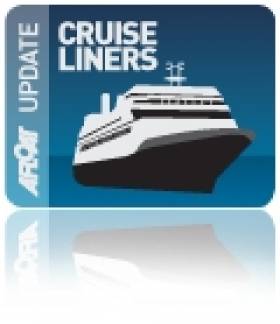Displaying items by tag: Circumnavigation Cruise of Ireland
Circumnavigation Cruise of Ireland Deferred as Bad Weather Delays Cruiseship from Argentina
#CRUISE LINERS – Due to bad weather a 11-day circumnavigation cruise of Ireland by Clipper Adventurer which is currently en-route from Argentina has been diverted to Cork, deferring the start of the cruise which was due to depart from Waterford today, writes Jehan Ashmore.
The 101m long vessel operated by Noble Caledonia was to welcome over 230 American and Canadian passenger on a cruise organised by Adventure Canada, in association with Royal Canadian Geographical Society.
According to the cruise itinerary the tourists were firstly to fly to Dublin and stay last night in a city-centre hotel. Also originally as scheduled was a coach tour today to visit Glendalough and the Rock of Cashel before reaching Waterford this afternoon to board the small expedition ship.
Despite the setback the 4,000 tonnes vessel with a crew of 65 which is on a repositioning voyage from South America to Europe was to make Cork her port of call tomorrow anyway. The only change being the embarkation port at the expense of the crystal city.
Clipper Adventurer is expected to arrive in Cork Harbour from 12 noon tomorrow and head for Ringaskiddy Deepwater Terminal. Also due is the 290m Emerald of the Seas which at 113,000 tonnes is in complete contrast as the massive vessel can accommodate over 3,500 passengers and 1,200 crew. She is to berth at Cobh cruise terminal.
Asides cruise callers the ferryport in Ringaskiddy will be as usual expecting the weekend-only call of Brittany Ferries flagship cruiseferry Pont-Aven, having made a crossing overnight from Roscoff.
While on the May Bank Holiday Monday Cobh is also set to welcome an even larger cruise caller in the form of the Independence of the Seas. The 154,000 tonnes giant is no stranger to the harbour as she made her maiden 'Irish' port of call in 2007. She can handle over 4,300 passengers and over 1,300 crew alone.
























































